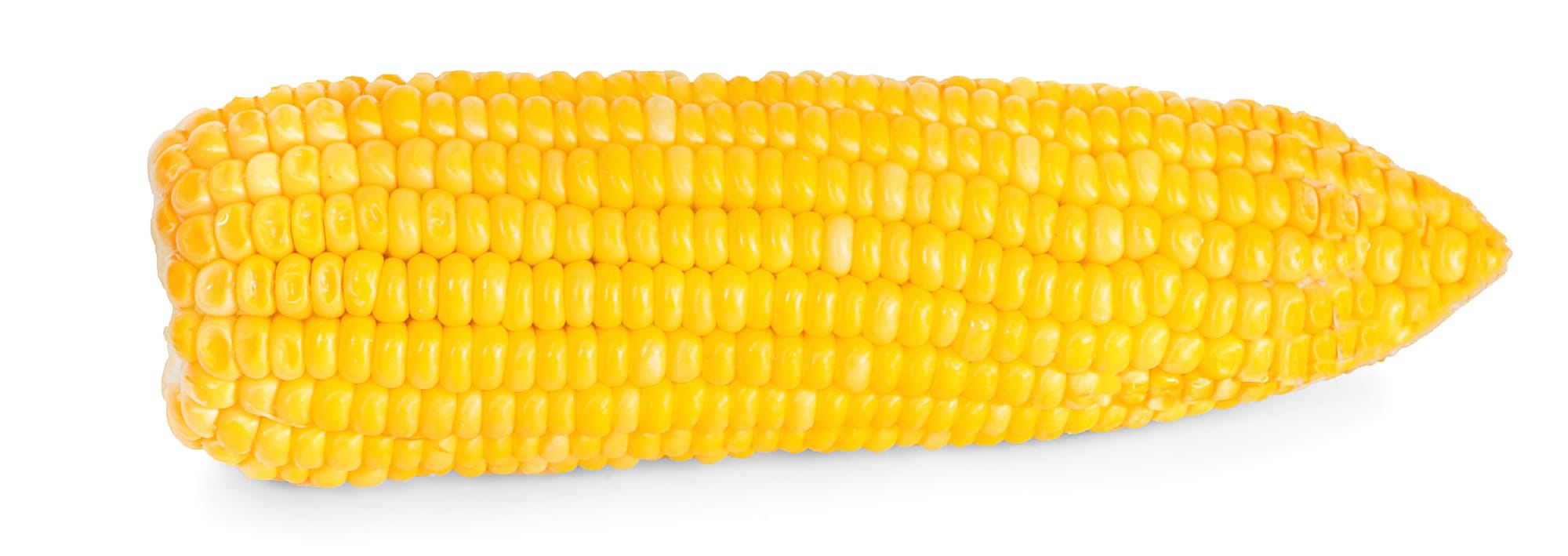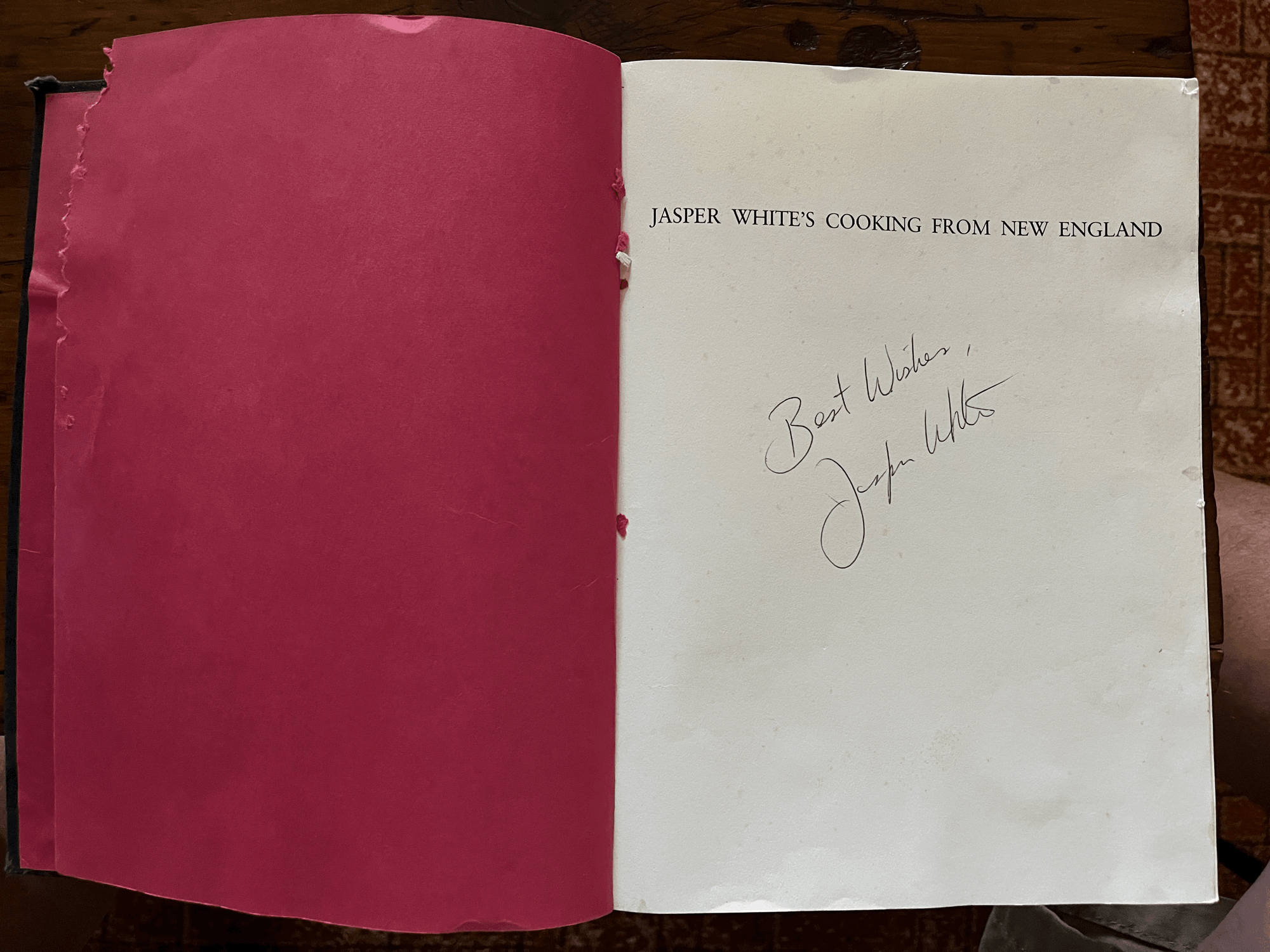Corn on the Cob
I serve corn on the cob as a separate course between the main meal and dessert, with a budget of three ears per person, minimum.

At this late stage in life, I do not expect to be answering penetrating interview questions such as, “What makes you different?” But at this stage in life, without much to be gained or lost, I would be tempted to answer as follows: “I serve corn on the cob as a separate course between the main meal and dessert, with a budget of three ears per person, minimum.”
And I have these corn rules:
1. Use a knife to spread a pat of butter over the corn. Do not roll it on the butter stick. (If the corn is especially young and delicious, skip the butter. Sprinkle salt.)
2. Eat the corn as you would use a typewriter, left to right, by row.
3. Use a corn scraper if you wish. Or, with a sharp knife, slice down the middle of the kernels to tenderize the rows (optional).
4. Do not be tempted to buy corn from away. Buy New Jersey corn if you are in New Jersey. Buy New Hampshire corn if you are in New Hampshire.
5. Do not buy New Hampshire corn before August 1st (subject to future climate changes).
It is corn season, and it will be over sorrowfully soon, after which no substitute will do. We will have zucchini all winter, hydroponic lettuce and tomatoes, kale, broccoli, carrots, onions, and potatoes, snow peas if we want, and crates of squashes. We can make them all passably good with the proper addition of salt, pepper, and cooking time. We can do no such thing with the dry, cellophane-wrapped corn on the cob that sometimes appears in the supermarket off-season. If we need corn in the winter, it will have to be canned or frozen.
I am passionate about corn on the cob. We will have it for dinner three to four nights a week during the season. I will sacrifice the daily dose of ice cream I require to keep me calm to embrace the additional 90 calories of another ear of corn, knowing that it is here today and gone tomorrow.
In his classic, Cooking from New England (Harper & Row 1989), Jasper White dishes up a recipe for corn on the cob. It is my favorite recipe, ever, from any cookbook for its no-nonsense direction. I reprint it here as a public service:
How to Cook Corn on the Cob
No vegetable, or for that matter any food, is better than corn on the cob at its best. Here is the right way to cook it.
Bring a large pot of lightly salted water to boil. Husk the corn and take a bite out of one of the ears. If the corn is very sweet and tender, it will need only to be heated through. In this case, add the corn to the water and remove from heat. After 3 minutes, remove the corn and serve at once. If the corn is not sugary and is a bit starchy, boil for 5 minutes before removing from heat. Only tasting the corn will tell you how long to cook it. Overcooking dilutes the flavor and ruins the texture of the corn.
Corn season is a tough time to be asked to someone’s house for dinner. Well-meaning cooks will serve a grilled protein (delicious, for sure), perhaps a fresh, green vegetable, and a single ear of corn, rolling around on its side of the plate, rapidly losing heat, sloshing in the barbecue sauce.
When my daughter was a child, she objected to one food touching another on the plate. She has two children now who have adopted the same affectation. I never understand it. A meal is a symphony of well-blended flavors. But there is an exception, which is corn on the cob. It is a soloist, so good (“[no]…food is better”) it deserves to be savored alone. Hence it comes as its own course in our house, plucked from the boiling water, piled on a warm platter, and covered with layers of tea towels to trap the heat. Then, depending on the size of the party, after one round the water is brought to a boil again, and in less than five minutes, more corn arrives at the table.
What drives this reverence for corn on the cob? Great taste, yes. Scarcity because the time for corn on the cob is fleeting. But, mostly, corn legend. My grandparents had a farm, and on the farm was a garden, and in the garden was a corn patch, and from the patch, when dinner was practically on the table, someone would be sent to fetch the corn. And the goodness of the corn in those days was legendary, passed down through the generations with corn stories. A particular story has always stood out wherein, on one occasion, enough corn was fetched and served that the spent ears covered the distance across the dining room and living room - from one end of the farmhouse to the other - as they were placed end to end on the floor.
What is corn on the cob to me? The legend of that party.


